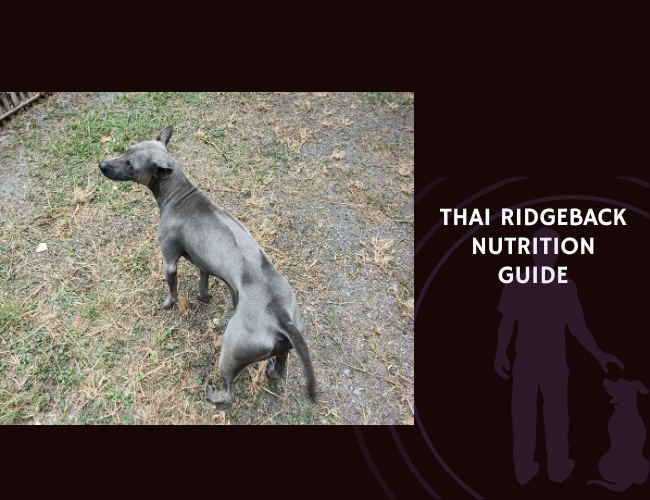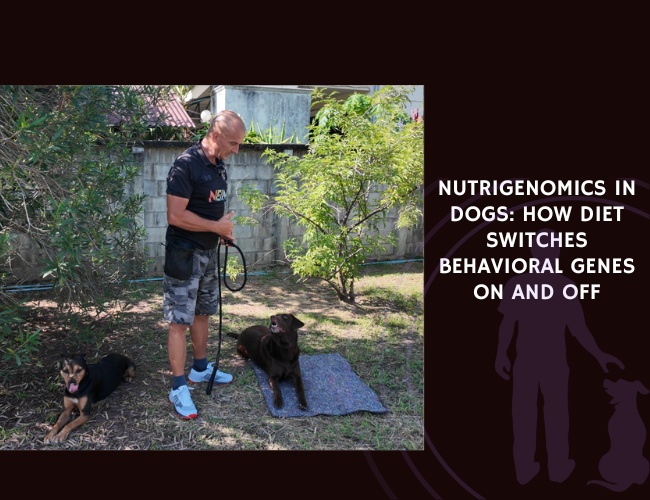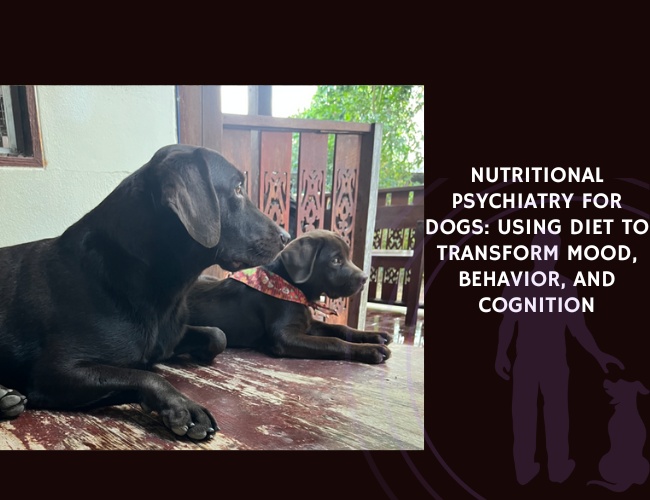The Thai Ridgeback, one of only three ridged breeds in the world, carries centuries of survival instincts in their lean, muscular frame. This ancient hunter from Thailand’s eastern provinces evolved to thrive on varied diets – from small game to village scraps – developing a remarkably efficient metabolism that modern owners must understand to maintain optimal health. Let us guide you through the nutritional journey that honors your Thai Ridgeback’s heritage while meeting their contemporary needs.
Understanding Your Thai Ridgeback’s Unique Metabolism
Your Thai Ridgeback’s metabolism reflects their sighthound ancestry – quick, efficient, and designed for bursts of intense activity followed by rest. You might notice your dog seems to “run hot,” burning through calories faster than many breeds of similar size. This metabolic efficiency, honed through generations of independent survival, means your feeding approach needs careful calibration.
Key Metabolic Traits:
- Higher basal metabolic rate – Your Thai Ridgeback burns 15-20% more calories at rest compared to similar-sized breeds
- Efficient protein utilization – Their bodies excel at converting dietary protein into lean muscle mass
- Sensitive glucose regulation – Quick energy bursts require stable blood sugar management
- Small stomach capacity – Despite their 35-55 pound frame, their stomach holds less than you’d expect
This metabolic profile means your Thai Ridgeback thrives on nutrient-dense foods rather than large volumes. Think quality over quantity – every bite should count. Their ancestors didn’t gorge on massive meals; they ate smaller, frequent portions of high-value nutrition. 🐾
Macronutrient Requirements: Building Blocks for Athletic Excellence
Your Thai Ridgeback’s lean physique isn’t just for show – it’s a functional design requiring specific nutritional support. Understanding their macronutrient needs helps you fuel both their daily activities and their genetic potential for speed and agility.
Protein: The Foundation of Strength
Thai Ridgebacks require higher protein levels than many breeds, reflecting their active nature and muscle-maintenance needs. Adult dogs thrive on 22-26% protein (dry matter basis), while puppies need 26-30% for proper development. You’ll notice your dog maintains better muscle tone and energy levels when protein comes from high-quality animal sources.
- Novel proteins work exceptionally well – venison, duck, or fish mirror their ancestral diet
- Lean poultry provides essential amino acids without excess fat
- Egg protein offers the highest biological value for muscle repair
- Limited ingredient formulas help identify any sensitivities
Fat: Concentrated Energy for Quick Bursts
The Thai Ridgeback’s hunting heritage demands readily available energy. Fat levels between 15-18% support their metabolic needs without promoting weight gain. Your dog’s sleek coat and skin health directly reflect their fat intake quality – particularly the balance of omega fatty acids.
Essential Fatty Acid Balance:
- Omega-3 sources – Wild-caught fish oils support their naturally low inflammation levels
- Omega-6 sources – Controlled amounts from quality poultry fat maintain skin barrier function
- Ideal ratio – Aim for 5:1 to 10:1 (omega-6 to omega-3) for optimal health benefits
Carbohydrates: Strategic Energy Management
While not essential, appropriate carbohydrates provide sustainable energy for your Thai Ridgeback’s active lifestyle. Their digestive system handles complex carbohydrates better than simple sugars, reflecting their evolutionary diet of varied plant matter alongside protein sources.
Carbohydrate Guidelines:
- Complex sources preferred – Sweet potatoes, pumpkin, and ancient grains (if tolerated)
- Limit to 30-40% of total diet to prevent weight gain
- Avoid rapid glucose spikes – Skip corn, wheat, and high-glycemic ingredients
- Fiber considerations – 3-5% crude fiber supports their naturally efficient digestion
Life Stage Nutrition: From Playful Puppy to Distinguished Senior
Your Thai Ridgeback’s nutritional needs evolve dramatically throughout their life, requiring thoughtful adjustments to support each developmental phase.
Puppy Stage (0-12 months): Building a Strong Foundation
Thai Ridgeback puppies grow rapidly, reaching near-adult size by 10-12 months. This accelerated development demands precise nutrition to support proper bone formation and muscle development without encouraging too-rapid growth that could stress developing joints.
- Meal frequency – 4 meals daily (8-16 weeks), reducing to 3 meals (4-6 months), then 2 meals thereafter
- Calcium:Phosphorus ratio – Maintain 1.2:1 to 1.5:1 for optimal skeletal development
- DHA supplementation – Supports cognitive development and trainability
- Portion control – Keep puppies lean; you should easily feel ribs with gentle pressure
During this stage, you’re not just feeding a puppy – you’re programming their metabolic efficiency for life. Overfeeding during growth can predispose your Thai Ridgeback to obesity and joint issues later.
Adult Maintenance (1-7 years): Peak Performance Nutrition
Adult Thai Ridgebacks showcase their breed’s athletic potential. Your feeding strategy should support their natural activity level while preventing the weight gain that can plague less active individuals. This breed’s tendency toward food motivation means portion control becomes crucial.
Adult Feeding Strategy:
- Twice-daily feeding – Splits their daily intake, reducing bloat risk
- Activity-based adjustments – Increase portions by 10-15% during high-activity periods
- Body condition monitoring – Weekly hands-on assessments ensure optimal weight
- Seasonal variations – Many Thai Ridgebacks naturally eat less in hot weather
Remember, your Thai Ridgeback’s primitive efficiency means they often need less food than guidelines suggest. Trust your hands more than the measuring cup – if you can’t easily feel ribs, reduce portions.
Senior Years (7+ years): Supporting Graceful Aging
Senior Thai Ridgebacks often maintain remarkable vitality, but their nutritional needs shift subtly. You might notice your dog becoming slightly less active or developing minor joint stiffness – nutritional adjustments can significantly impact their quality of life.
Senior Nutrition Modifications:
- Increased protein – 24-28% helps maintain muscle mass against age-related loss
- Joint support compounds – Glucosamine, chondroitin, and MSM benefit aging joints
- Antioxidant boost – Vitamins E and C, plus selenium, combat cellular aging
- Digestive support – Probiotics and digestive enzymes aid nutrient absorption
Many senior Thai Ridgebacks benefit from slightly smaller, more frequent meals as their metabolism slows. This approach mirrors their ancestral eating patterns and supports stable energy levels throughout the day. 🧡

Common Sensitivities and Dietary Considerations
While Thai Ridgebacks generally possess robust constitutions, their primitive genetics can manifest in specific dietary sensitivities. Understanding these potential issues helps you make informed feeding choices that prevent problems before they arise.
Identifying Food Sensitivities
Your Thai Ridgeback might display sensitivity through various signs – persistent scratching, ear infections, or digestive upset often trace back to dietary triggers. This breed’s limited genetic diversity can make them more reactive to common commercial dog food ingredients.
Common Sensitivity Indicators:
- Skin manifestations – Itching, hot spots, or dull coat despite good grooming
- Digestive signs – Loose stools, excessive gas, or reluctance to eat
- Behavioral changes – Lethargy or hyperactivity after meals
- Ear inflammation – Recurring infections often link to food allergies
Elimination Diet Approach
When sensitivities arise, an elimination diet helps identify triggers. Start with a novel protein your dog hasn’t eaten before – kangaroo, rabbit, or unusual fish species work well. Pair with a single carbohydrate source like sweet potato. Feed exclusively for 8-12 weeks, then gradually reintroduce suspected triggers one at a time.
Elimination Diet Protocol:
- Week 1-2 – Transition gradually to novel protein/carb combination
- Week 3-10 – Strict adherence; document all changes in symptoms
- Week 11+ – Systematically reintroduce previous ingredients
- Ongoing – Maintain a food diary to track reactions
This methodical approach, while requiring patience, often reveals surprising sensitivities that simple food switches miss.
Practical Feeding Guidelines for Thai Ridgeback Owners
Translating nutritional science into daily feeding practices ensures your Thai Ridgeback thrives. These practical guidelines address the real-world challenges of feeding this unique breed.
Meal Timing and Frequency
Thai Ridgebacks perform best with consistent meal timing that respects their natural activity patterns. Most adults thrive on twice-daily feeding, but individual preferences vary. You might notice your dog naturally gravitates toward eating more in cooler morning or evening hours – honor these instincts.
Optimal Feeding Schedule:
- Morning meal – 30-60 minutes after morning exercise
- Evening meal – 2-3 hours before bedtime, allowing digestion before sleep
- Exercise timing – Wait at least one hour after meals before vigorous activity
- Weekend consistency – Maintain schedule even on non-work days
Portion Control Strategies
Thai Ridgebacks’ food motivation can lead to overeating if given the opportunity. Their efficient metabolism means they need less food than their enthusiasm suggests. Use body condition scoring rather than strict cup measurements to guide portions.
Body Condition Assessment:
- Ideal weight – Ribs easily felt but not visible; waist visible from above
- Underweight – Ribs, spine, and hip bones visible; no palpable fat
- Overweight – Ribs difficult to feel; waist barely distinguishable
- Adjustments – Change portions by 10% weekly until ideal condition achieved
Slow Feeding Techniques
Many Thai Ridgebacks exhibit rapid eating behaviors – likely stemming from ancestral competition for resources. This can lead to digestive issues and increased bloat risk. Implementing slow-feeding strategies supports better digestion and satisfaction.
Effective Slow-Feeding Methods:
- Puzzle feeders – Engage their problem-solving abilities while slowing consumption
- Snuffle mats – Mimic natural foraging behaviors
- Scattered feeding – Spread kibble across a safe area for “hunting”
- Frozen meals – Mix food with water or broth and freeze in appropriate toys
These methods transform mealtime into enriching activities that satisfy both nutritional and behavioral needs.
Lean. Ancient. Precision-Fueled.
The Thai Ridgeback doesn’t just eat—he adapts.
Shaped by survival, this breed’s nutritional needs are rooted in evolution, not convenience. You’re not feeding a lab experiment or a western couch companion. You’re feeding a desert-born athlete whose metabolism still remembers chasing game in the heat of rural Thailand. Skip the filler. Honour the design.
Every calorie counts—make it matter.
Their compact stomach, high burn rate, and protein-efficient system don’t tolerate junk. You need clean proteins, stable fats, and intelligent carbs. Small meals, big benefits. They don’t need more food—they need better food.

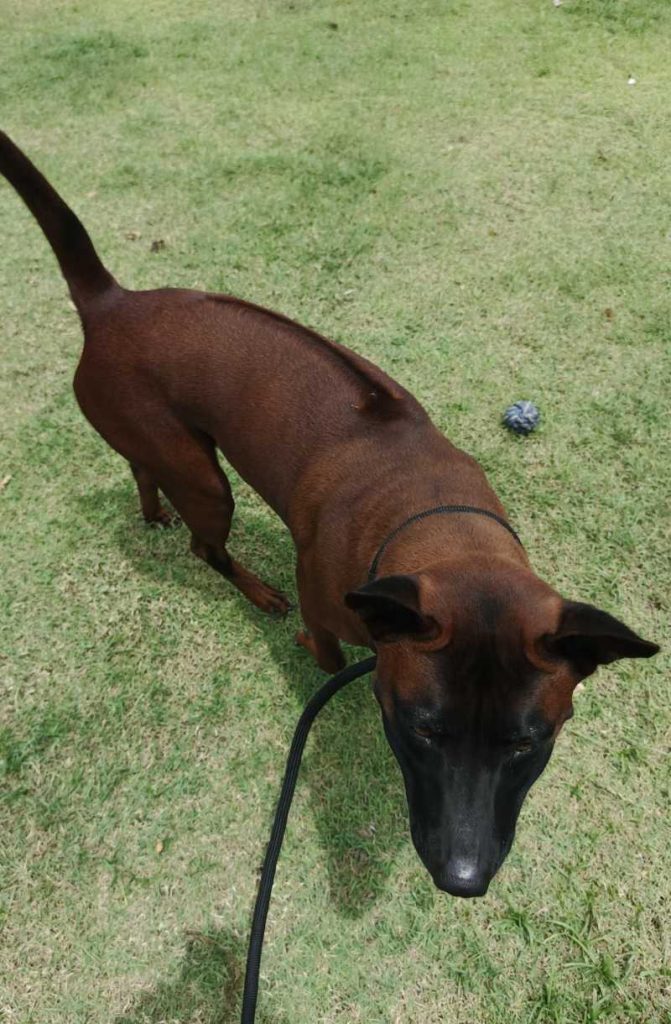
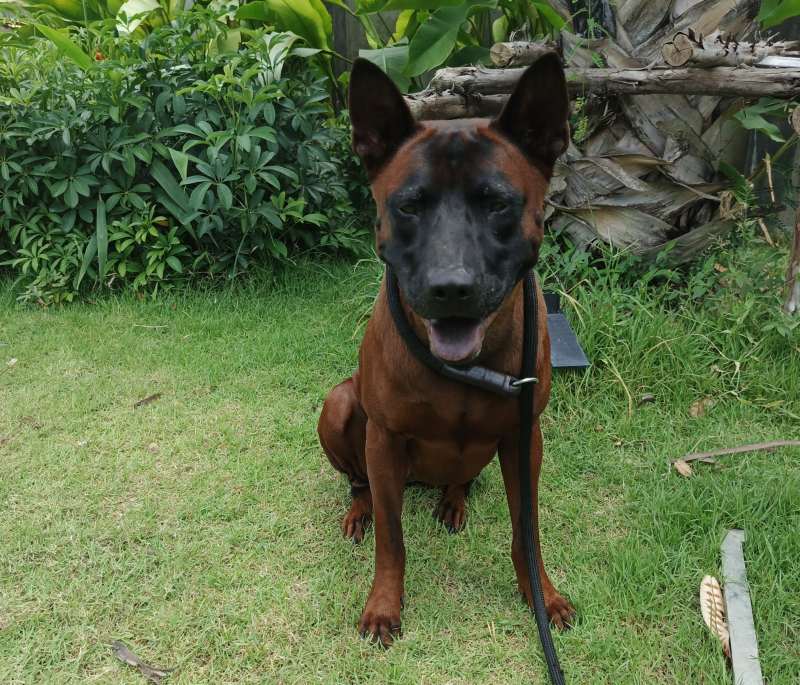
Feed the instinct, not the market.
Most commercial formulas won’t do. You’re fueling lean muscle, joint resilience, and heat-regulated endurance. That means omega balance, joint protectors, slow-release energy—not whatever’s cheapest in the bag. Know what they’re made of. Feed them like it. 🧡
Supplementation Strategies for Optimal Health
While high-quality commercial diets meet basic requirements, targeted supplementation can address breed-specific needs and optimize your Thai Ridgeback’s health. Always consult your veterinarian before adding supplements to avoid imbalances.
Core Supplements for Thai Ridgebacks
Joint Support Complex: Given their athletic nature and deep chest, Thai Ridgebacks benefit from proactive joint support:
- Glucosamine sulfate – 500-1000mg daily for adults
- Chondroitin sulfate – 400-800mg daily
- MSM – 500-1000mg for anti-inflammatory benefits
- Green-lipped mussel – Natural source of joint-supporting compounds
Digestive Health Support: Their efficient metabolism responds well to digestive optimization:
- Probiotics – Multi-strain formulas supporting gut microbiome
- Digestive enzymes – Particularly beneficial for seniors or dogs transitioning diets
- Prebiotic fiber – Inulin or FOS supports beneficial bacteria
- Slippery elm – Soothes occasional digestive upset
Skin and Coat Enhancement: Thai Ridgebacks’ short coats showcase their overall health:
- Fish oil – 1000mg per 30 pounds body weight
- Vitamin E – 100-400 IU daily (works synergistically with omega-3s)
- Biotin – Supports coat quality and nail strength
- Zinc – Essential for skin barrier function
Special Dietary Considerations for Health Conditions
Thai Ridgebacks’ generally robust health doesn’t exempt them from certain conditions that benefit from nutritional management. Understanding these connections empowers proactive health maintenance.
Managing Bloat Risk
The Thai Ridgeback’s deep chest creates anatomical predisposition to gastric dilatation-volvulus (bloat). Dietary management significantly reduces risk:
Anti-Bloat Feeding Protocol:
- Multiple small meals – Never feed entire daily portion at once
- Elevated feeders debated – Recent research suggests floor-level may be safer
- Avoid exercise – No running/playing 1 hour before or 2 hours after meals
- Limit water – Provide measured amounts with meals, free access other times
- Food type matters – Avoid foods that expand significantly when wet
Supporting Lean Muscle Mass
Thai Ridgebacks naturally carry minimal body fat, making muscle maintenance crucial throughout life. Your feeding strategy should prioritize lean muscle preservation:
Muscle Maintenance Protocol:
- Adequate protein – Never drop below 22% for adults, even during weight loss
- BCAA supplementation – Branched-chain amino acids support muscle recovery
- L-carnitine – 500-2000mg daily enhances fat metabolism while preserving muscle
- Regular body composition assessment – Monitor muscle mass, not just weight
Dental Health Through Diet
Thai Ridgebacks often maintain better dental health than many breeds, but nutritional support enhances this natural advantage:
Dental Health Nutrition:
- Raw meaty bones – Appropriate-sized bones provide natural cleaning (under supervision)
- Dental chews – Enzymatic options add plaque-fighting benefits
- Texture variety – Mix kibble with raw vegetables for natural abrasion
- Water additives – Enzymatic formulas support oral health between cleanings
Transitioning Diets: A Strategic Approach
Whether addressing sensitivities, life stage changes, or simply finding a better formula, diet transitions require careful planning for Thai Ridgebacks. Their efficient digestive systems can react strongly to sudden changes.
The 10-Day Transition Protocol
Days 1-3: Mix 75% current food with 25% new food Days 4-6: Balance at 50% current, 50% new food Days 7-9: Shift to 25% current, 75% new food Day 10: Complete transition to 100% new food
Monitor stools throughout – loose stools might indicate too-rapid transition. Slow the process if needed. Some Thai Ridgebacks benefit from probiotic support during transitions.
Troubleshooting Transition Challenges
Refusing new food: Try warming slightly or adding low-sodium broth Digestive upset: Slow transition further; consider adding pumpkin or rice Selective eating: Thai Ridgebacks may pick out preferred pieces – grinding or moistening prevents this Weight changes: Adjust portions based on new food’s caloric density
Hydration: The Overlooked Nutrient
Thai Ridgebacks’ desert-adaptation heritage means they often drink less than other breeds. However, proper hydration remains crucial for their kidney health and thermoregulation. You might notice your dog drinks sporadically but deeply – this pattern reflects their ancestral water-conservation instincts.
- Multiple water stations – Place bowls in various locations to encourage drinking
- Temperature matters – Many prefer cool (not cold) water
- Flavor enhancement – Low-sodium bone broth increases appeal
- Moisture in meals – Adding water to kibble provides additional hydration
- Monitor output – Urine should be pale yellow; dark indicates dehydration
During hot weather or after exercise, offer electrolyte-enhanced water to replace minerals lost through their efficient cooling system.
Creating a Sustainable Feeding Plan
Your Thai Ridgeback’s nutrition plan should evolve with their needs while remaining practical for your lifestyle. Success comes from consistency, observation, and adjustment rather than rigid adherence to any single approach.
Weekly Meal Planning
Batch preparation ensures consistent nutrition while saving time:
Sunday Prep Session:
- Portion daily meals – Pre-measure into containers
- Prepare supplements – Weekly pill organizers work well
- Prep fresh additions – Wash and chop vegetables for the week
- Stock rotation – Ensure oldest food gets used first
Cost-Effective Quality Nutrition
Feeding your Thai Ridgeback well doesn’t require excessive spending. Strategic choices maximize nutritional value:
Smart Shopping Strategies:
- Buy in bulk – Large bags offer better value if properly stored
- Seasonal proteins – Rotate based on availability and price
- Subscription services – Often provide discounts for regular delivery
- Compare price per calorie – Not just price per pound
Remember, preventing health issues through quality nutrition costs far less than treating diet-related conditions.
Conclusion: Nourishing Your Thai Ridgeback’s True Nature
Feeding your Thai Ridgeback goes beyond filling a bowl – it’s about honoring their unique heritage while supporting their modern lifestyle. This ancient breed’s nutritional needs reflect thousands of years of adaptation, requiring thoughtful consideration rather than one-size-fits-all approaches. By understanding their efficient metabolism, respecting their natural feeding patterns, and providing species-appropriate nutrition, you’re not just feeding a dog – you’re fueling a legacy.
Your Thai Ridgeback’s gleaming coat, alert expression, and athletic grace all stem from the nutrition you provide. Trust your observations, work with your veterinarian, and remember that the best diet for your dog is one that keeps them thriving at every life stage. With patience and attention to their individual needs, you’ll discover the feeding approach that unlocks your Thai Ridgeback’s full potential. 🐾
Next, we’ll explore how to channel your Thai Ridgeback’s remarkable intelligence through effective training strategies that respect their independent nature while building an unbreakable bond.

